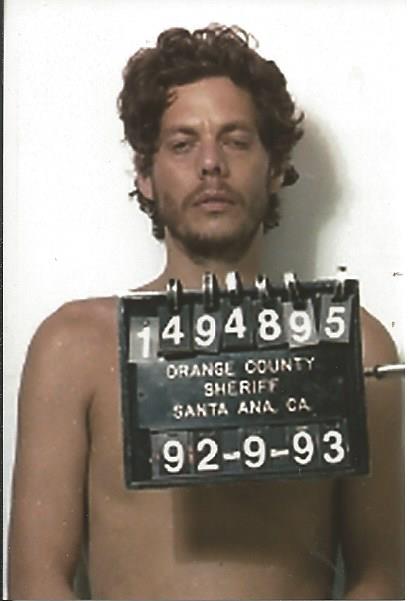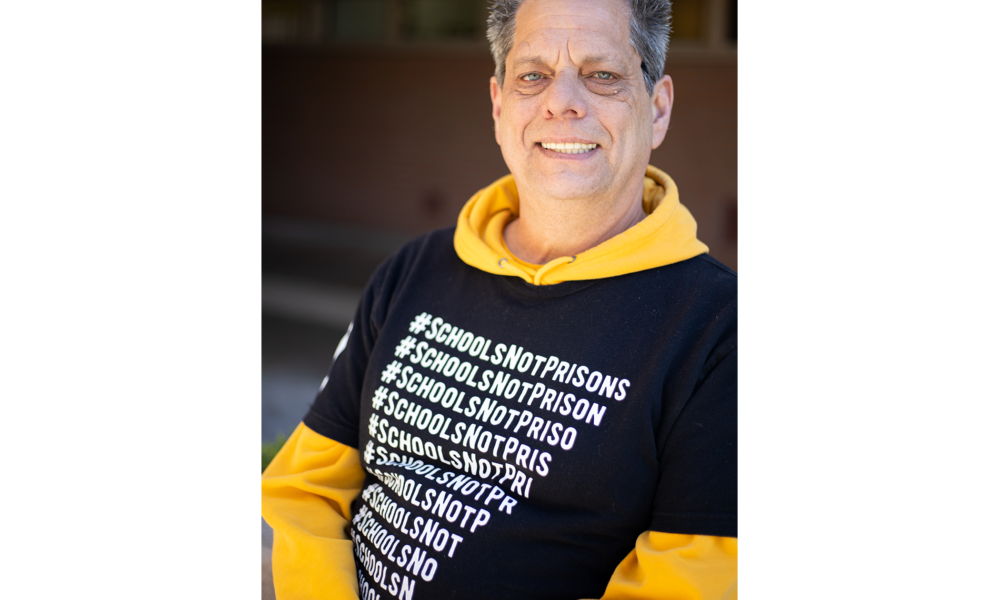Dale Lendrum was sitting in a jail cell after being arrested by his parole officer for testing positive on a drug test in 2008, when he was offered a spot in a drug rehabilitation program.
This was the first time Lendrum had been given an option besides a prison sentence.
“I was 46 at the time I wasn’t a spring chicken anymore or anything like that,” Lendrum said. “I began to think about doing something different and looking to maybe education to be that mechanism to transform my life.”
Lendrum completed a 30-day detox program in the California Institution for Men. He was then transferred to the Orange County Jail system to participate in a three-month rehabilitation program.
As the gravity of his situation became heavier each day, Lendrum decided to write letters to Golden West College, Coastline College and Orange Coast College inquiring about financial aid and admission in an attempt to make his way out of the world he was living in. Only Golden West responded.
“At that point I was really hoping that higher education would transform my life,” Lendrum said. “I was giving myself a second chance instead of a third strike.”
Upon completing his associate degree at Golden West he transferred to Long Beach State where he began his activism for prison education programs and funding opportunities for formerly incarcerated persons.
Enlarge

Ryan Guitare/Daily Forty-Niner
Lendrum, now an Associated Students Inc. senator for the College of Education, recently presented two bills to the senate. The first would encourage CSULB to support the Aim Higher Act, which would make the Pell Grant available to formerly incarcerated persons. The second would encourage the campus to engage in an in-person degree program for individuals still serving time.
“Our primary focus is drafting legislative resolutions that improve the quality of life for students and enhances their success and more importantly, removes any barriers, or challenges to education,” Lendrum said. “Equity not equality.”
As a part of President Bill Clinton’s “tough on crime” initiative, formerly incarcerated persons lost the opportunity to receive the Pell Grant in 1994.
“When Pell Grant access for prisoners was rescinded, more than half of the colleges and universities that were able to go inside and deliver degree programs face to face, hybrid or in other manners disappeared,” Lendrum said.
The Aim Higher Act is currently under review by the U.S. House of Representatives, and if passed, he said, it will provide those who want to reach higher with the chance they need, like he had years ago.
“In my research, the data for the last five decades proves beyond a shadow of a doubt that there’s a relationship between the lack of education and criminality and incarceration,” Lendrum said.
Recidivism is statistically higher in the U.S. than other similarly advanced nations, according to the U.S. National Library of Medicine National Institutes of Health. The Bureau of Justice Statistics finds that 67.8% of prisoners will reoffend within three years of their release.
However, the statistics change once education is introduced into the equation.
According to the National Institute of Justice, an individual with an associate degree, the likelihood of recidivism drops to 13.7%, with a bachelor’s degree, it drops to 5.6% and with a master’s degree, recidivism it’s effectively 0%.
The topic of his second proposed resolution, which received overwhelming support from his fellow senators, would push to establish an in-person educational program at CSULB for individuals still serving their sentences. Currently, California State University, Los Angeles is the only institution providing prisoners the opportunity to earn a Bachelor of Arts in communication studies.
“Folks are coming out better prepared to reenter society, better prepared to restore their lives, the lives of their families, their community and are more employable,” Lendrum said.
Lendrum’s story began in Downey, and when his parents divorced when he was young, he said the instability of home life led him to turn to drugs at the age of 16.
“Almost to the day that I turned 18 I began to get in trouble with the criminal justice system, in large part to support my drug habit,” Lendrum said. “I was a full-blown cocaine addict and already starting to go to jail.”
A few years later, Lendrum moved in with his mother in Sweden, where he traded in his cocaine addiction and began using heroin on a regular basis.
“I went to live with my mom and get away from the drugs,” Lendrum said. “So I came back to America because I was afraid of dying as a heroin addict.”
Once back in the states, Lendrum began to use methamphetamine, and as the drug use increased, so did his interactions with the prison system.
“My addictions led me to be jailed on more than 24 occasions in four different counties, so it didn’t matter where I went, I was getting in trouble,” Lendrum said. “Six trips to prison, six imprisonments, and then I earned two strikes in the process.”
Lendrum’s controlling cases were violent crimes, including a felony charge for assault with a deadly weapon without great bodily injury and another felony charge for threatening to assault his then-girlfriend, but all of his subsequent charges were for failed drug tests while on parole.
Enlarge

The three-strikes law applies to any individual who has committed two prior violent crimes, meaning the third conviction of any kind could result in a sentence of life imprisonment according to Stanford Law. This meant that Lendrum was on the edge of spending the rest of his days in a prison cell.
However, education led him away from this path.
Three years ago, Lendrum first joined ASI as secretary for system-wide affairs where he lobbied for bringing Project Rebound to CSULB.
Started in 1967, Project Rebound provides special admissions to those who are formerly incarcerated and wish to enter into the CSU system. The program currently exists on nine campuses, but despite Lendrum’s efforts, it has yet to be adopted at CSULB.
“While we got that program established, the idea was that ASI would establish the program within three to five years with the goal of the university institutionalizing the program,” Lendrum said. “After eight months the university was prepared to take over the program, but they haven’t launched it yet.”
Lendrum is unclear as to why the program hasn’t been launched yet, having served as the interim director when it first came to the campus.
Over the years Lendrum said he’s faced some backlash against his activism.
“The pushback always comes with ‘We don’t have the money, we just don’t have the money, we’d like to, but we don’t have the money,’” Lendrum said. “There’s also always a little murmur here and there: ‘Well, they’re violent felons.’”
For Lendrum, education is the key to escaping a lifestyle bound to end in tragedy, and he plans to continue on working towards a future where those who were once in his shoes can enjoy the same opportunities.
“If we can’t use education to rehabilitate, what are we going to use?” Lendrum said. “Threats don’t work, locking people away don’t work, let’s try something different.”




